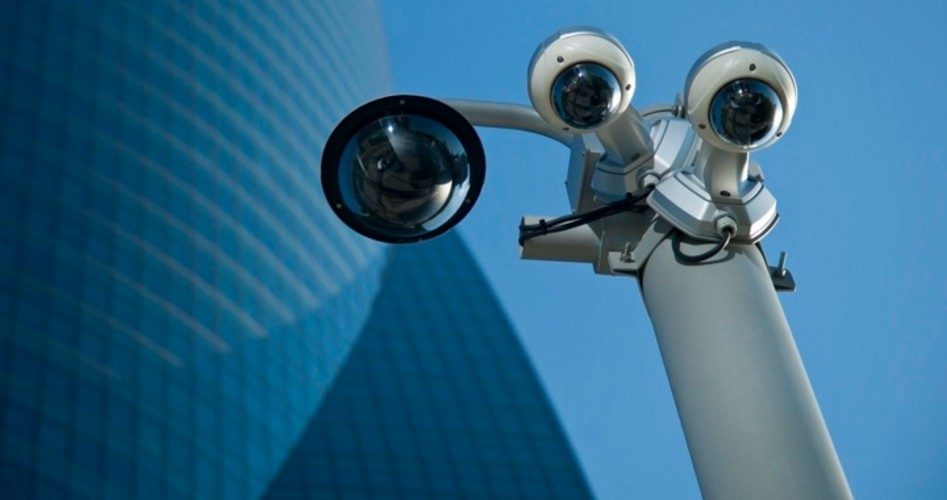
The U.S. government exercises control over a massive and technologically advanced surveillance system that has the capacity to keep nearly the entire population of this country under the watchful eye of government 24 hours a day.
TrapWire is the name of this newly revealed network of cameras and other surveillance tools being utilized by a federal government that is rapidly constructing an impenetrable, inescapable theater of surveillance, most of which is going unnoticed by Americans and unreported by the mainstream media.
Unlike other elements of the central government’s cybersurveillance program, word about TrapWire was not leaked by Obama administration insiders. The details of this nearly unbelievable surveillance scheme were made public by WikiLeaks, the anti-secrecy group founded by Julian Assange.
The TrapWire story percolated from the millions of emails from the Austin, Texas-based private intelligence-gathering firm Stratfor, published this year by WikiLeaks.
Covering correspondence from mid-2004 to 2011, these documents expose Stratfor’s “web of informers, pay-off structure, payment-laundering techniques and psychological methods.”
This coterie of Stratfor co-conspirators are apparently angry about the leaks, considering that the WikiLeaks servers have been under near-constant Distributed Denial of Service (DDoS) attacks since the TrapWire revelations began attracting notice of alternative journalists. Some outlets report that the cyberattacks are being carried out by agents of the American intelligence community determined to prevent the full depth of this scandal from being explored by reporters.
Exactly what is TrapWire? According to one description of the program, from Russia Today:
Former senior intelligence officials have created a detailed surveillance system more accurate than modern facial recognition technology — and have installed it across the US under the radar of most Americans, according to emails hacked by Anonymous.
Every few seconds, data picked up at surveillance points in major cities and landmarks across the United States are recorded digitally on the spot, then encrypted and instantaneously delivered to a fortified central database center at an undisclosed location to be aggregated with other intelligence.
Again, remember this is not the plot of some futuristic dystopian movie; this is the situation under which we are living today.
Although many of the details remain undisclosed, it is known that the infrastructure of TrapWire was designed and deployed by Abraxas, an intelligence contractor based in Northern Virginia headed and run by dozens of former American surveillance officers. As one article described it: “The employee roster at Abraxas reads like a who’s who of agents once with the Pentagon, CIA and other government entities according to their public LinkedIn profiles, and the corporation’s ties are assumed to go deeper than even documented.”
As with so many of the federal government’s unconstitutional efforts at placing each and every citizen of the United States under the never-blinking eye of those who consider themselves our caretakers, TrapWire is sold as being a necessary weapon in the War on Terror. As with other such “safety” schemes — most notably the National Defense Authorization Act (NDAA) — the individual liberties upon which this nation was founded are sacrificed on the crimson-stained altar of national security.
At The New American we have dutifully chronicled the potentially disastrous applications of the powers granted to the president in the NDAA. While that act masquerading as law is historic in its despotism, the patently unconstitutional uses to which TrapWire is currently being employed is equally as pernicious to the Bill of Rights and merits the attention of every American zealous for the perpetuation of this Republic and their own personal freedom.
In very real and now verifiable ways, every one of the nearly ubiquitous surveillance cameras being installed in every city and town nationwide are at the disposal of the shadowy snoops in the federal government who can apply technologically extraordinary facial recognition software to identify, target, and track anyone they consider to be a potential “threat to the security of the homeland.”
Despite all the foregoing information, there may yet be those who doubt that our own federal government would ever wield such power over otherwise law-abiding citizens. Those so inclined should read the following statement made in 2005 by Abraxas founder Richard “Hollis” Helms.
In interview Helms claimed that TrapWire “can collect information about people and vehicles that is more accurate than facial recognition, draw patterns, and do threat assessments of areas that may be under observation from terrorists.” Then, invoking the tried and true “security” trope, Helms described his company’s product as “a proprietary technology designed to protect critical national infrastructure from a terrorist attack by detecting the pre-attack activities of the terrorist and enabling law enforcement to investigate and engage the terrorist long before an attack is executed.” “The beauty of it is that we can protect an infinite number of facilities just as efficiently as we can one and we push information out to local law authorities automatically,” he added.
The upshot of this surveillance scheme of nearly incalculable scope and sophistication is that for about half a dozen years now almost every city of any substantial size has been under surveillance by the federal government. Citizens of these metropolitan areas (the Department of Homeland Security paid $832,000 to install TrapWire in Washington, D.C. and Seattle, for example) are well aware of the implementation of CCTV cameras on buildings, on traffic lights, at intersections, in subways, etc. that are always sold to the public as an effective and necessary tool in the hands of law enforcement whose only goal is to “serve and protect.” The problem of such widespread monitoring is that it is now known that at its own will the federal government may collect and conglomerate these images and use them to draw an imperceptible and inescapable net around anyone who passes under the unblinking eyes in the sky.
Despite the blanket of silence that the government and its agents have thrown over this story, Cubic Corporation, the company that acquired Abraxas in 2010, released a statement August 13 insisting that “Abraxas Corporation then and now has no affiliation with Abraxas Applications now known as Trapwire, Inc.”
That claim doesn’t square with the information revealed in a story covering the latest in the ongoing TrapWire revelations. According to that article:
According to a 2007 report in the Washington Business Journal, though, that as well is a full-on fib.
“Abraxas Corp., a risk-mitigation technology company, has spun out a software business to focus on selling a new product,” the article reads. “The spinoff – called Abraxas Applications – will sell TrapWire, which predicts attacks on critical infrastructure by analyzing security reports and video surveillance.”
It is unclear how or if Cubic Corporation will explain this apparent discrepancy.
Readers of The New American may recognize Cubic Corporation’s name. In a recent article, this reporter wrote about a $6 million contract recently awarded to Cubic Corporation by DARPA (the secretive research and development agency inside the Pentagon) to develop a “laser-emitting targeting computer” for American military snipers. Within 15 months, DARPA expects Cubic Corporation to deliver a scope capable of calculating “crosswind profile, direction, range, temperature, atmospheric pressure, humidity, cant and pointing angles, etc.” as close to real time as possible and then instantly delivering that data to the sights of the gun and a display screen viewed by the sniper. And, it must be capable of doing all of this in the dark. The device must also have a range of 2 kilometers (1.24 miles) and must have a first round hit probability of 60-90 percent at that range.
The New American will continue to update readers on developments in the TrapWire story, as well as all assaults by the central government on the civil liberties that are the foundation of a thousand years of Anglo-American law and its most novel and notable expression — the Constitution of the United States of America. These issues transcend the false “conservative-liberal” dialectic. TrapWire and similar schemes concern every American and strike at the very heart of the Bill of Rights and the protections therein of the liberties afforded to all, regardless of personal political allegiance.



